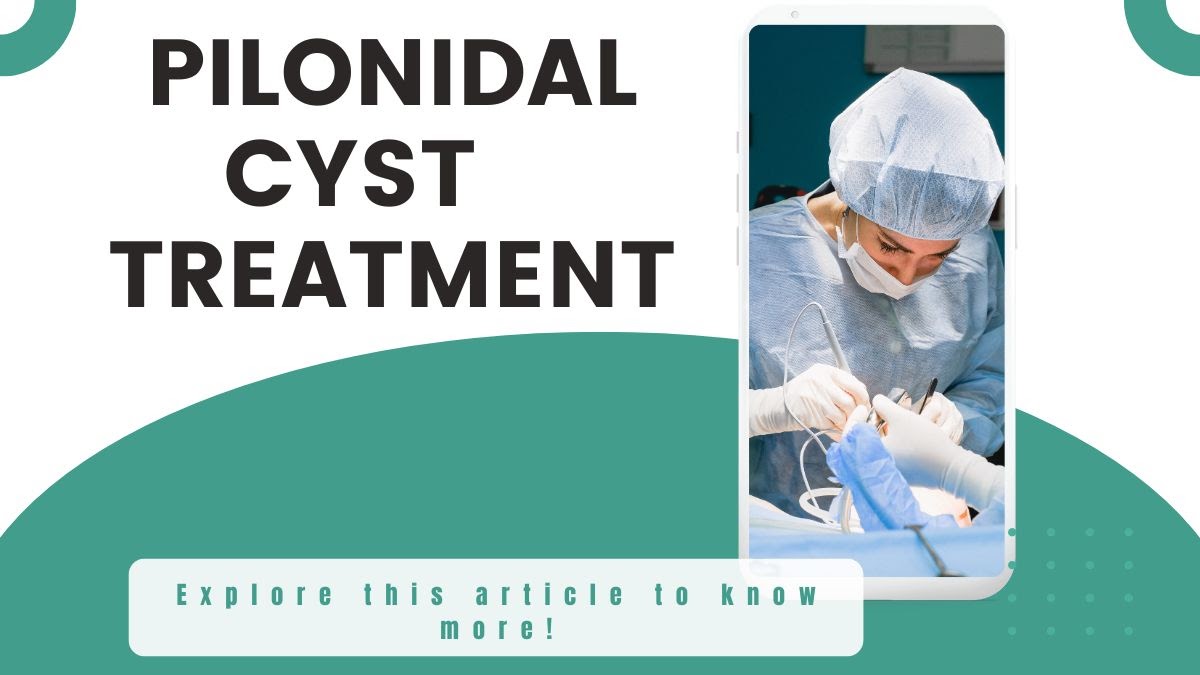A pilonidal cyst also called pilonidal sinus is an unnatural growth of skin at the tailbone or around the tailbone. This growth of skin is caused when the ingrown hair continues to grow under your skin. Pilonidal cysts occur commonly in people who sweat excessively, sit for long hours, and have excessive hair around their tailbone.
However, people have the habit of leaving a pilonidal cyst without treatment. This habit can make things complicated later on. There are several treatment options available for treatment cysts such as antibiotic treatment and surgical treatment. Antibiotic pilonidal cyst treatment works amazingly in treating mild pilonidal cysts while surgical treatment is used for severe pilonidal cysts.
Treatment options for pilonidal cysts
The following are the treatment options available for treating a pilonidal cyst:
- Home remedies treatment
- Antibiotic treatments
- Surgical treatments
Home remedies treatments for pilonidal cysts
Home remedies treatment may or may not work in getting rid of mild pilonidal cysts but will give fast relief from all the irritations. So, the following are a few home remedies that can give you fast relief from pain and inflammation:
Warm compresses
Applying warm compresses to your pilonidal cyst can help in relieving pain, discomfort, irritation, and inflammation. This method also supports blood circulation. For this, take a clean towel or cotton cloth. Heat it on until it gets warm on a frying pan or hot water bottle. Apply gently on top of your pilonidal cyst for 10 to 15 minutes. For effective results, you can repeat this step twice or thrice a day. Another way is to soak your bottom in warm water for at least 10 minutes.
Epson salt
The Epson salt method can help speed up the discharge of pus or other materials from your cyst. For this method, you can add a few cups of Epson salt to warm water. Now, soak your bottom into the warm water for 10 minutes. If you use this method, make sure you take an Epson salt bath every day for effective results.
Apple cider vinegar
Applying apple cider vinegar on the pilonidal cyst can balance the pH level of the affected area effectively as it is acidic in nature. It also helps in discharging the pus thus, it fastens the healing process of pilonidal cyst.
For this method, take a cotton ball. If you don’t have a cotton ball then, you can take a piece of cotton cloth. Deep it in apple cider vinegar. Once it gets soaked, apply it on top of the pilonidal cyst gently. Now, secure it to keep it in place with a bandage. Leave it for a few hours.
Antibiotic treatments for pilonidal cysts
As mentioned above, antibiotic treatment works the best in getting rid of a mild pilonidal cyst. If you have a mild pilonidal cyst, then you need to try these easy methods. Following are some of the commonly used antibiotic treatments for pilonidal cysts:
Metronidazole
Metronidazole antibiotic drug is the most commonly used drug in treating mild pilonidal cysts. This drug helps in reducing the growth of protozoa and bacteria and also helps clear up abscesses in the cyst. You can use metronidazole in a topical way or oral way, and it is also available in intravenous form.
Flucloxacillin
Flucloxacillin antibiotic drug, a type of penicillin helps in clearing infection caused by pilonidal cysts. However, flucloxacillin may not be suitable for people with penicillin allergy. If you have an allergy to penicillin, do not use this drug as it can further irritate your skin instead of making it better.
Erythromycin
Erythromycin antibiotic drug works in two ways. First, it can help decrease the bacteria growth. Second, it can destroy the bacteria. Like metronidazole, erythromycin can be used either topically, orally, or intravenously. If you are using erythromycin to treat your pilonidal cyst, make sure you take it before meals.
Clarithromycin
Clarithromycin helps stop the spreading of bacteria further. This antibiotic drug is mainly used by people with an allergy to penicillin. So, you can use clarithromycin for treating your pilonidal cysts in place of flucloxacillin if you are allergic to penicillin.
Clindamycin
This antibiotic drug helps to reduce the bacteria’s growth and prevent further spreading of infection. Clindamycin can be used in an oral way or topical way. People with penicillin allergy can also use this antibiotic drug.
Surgical treatments for pilonidal cysts
Surgical treatments are only used in treating severe pilonidal cysts. If you have severe pilonidal cysts and other treatment options do not help then you need a surgical procedure.
In this surgical procedure, the surgeon will numb the area first with some anesthesia. Once the site gets numb, the surgeon will make a small cut on top of the cyst. This allows the pus and other unwanted materials inside the cyst to drain completely. Now, the surgeon has two options i.e. either stitch the wound or leave the wound open.
- Stitch the wound: Stitching the wound takes less time to heal compared to the other option. However, it has a higher risk of returning the cyst.
- Leave the wound open: leaving the wound open takes a longer time to heal compared to stitching the wound. However, it has a lower risk of returning the cyst.


